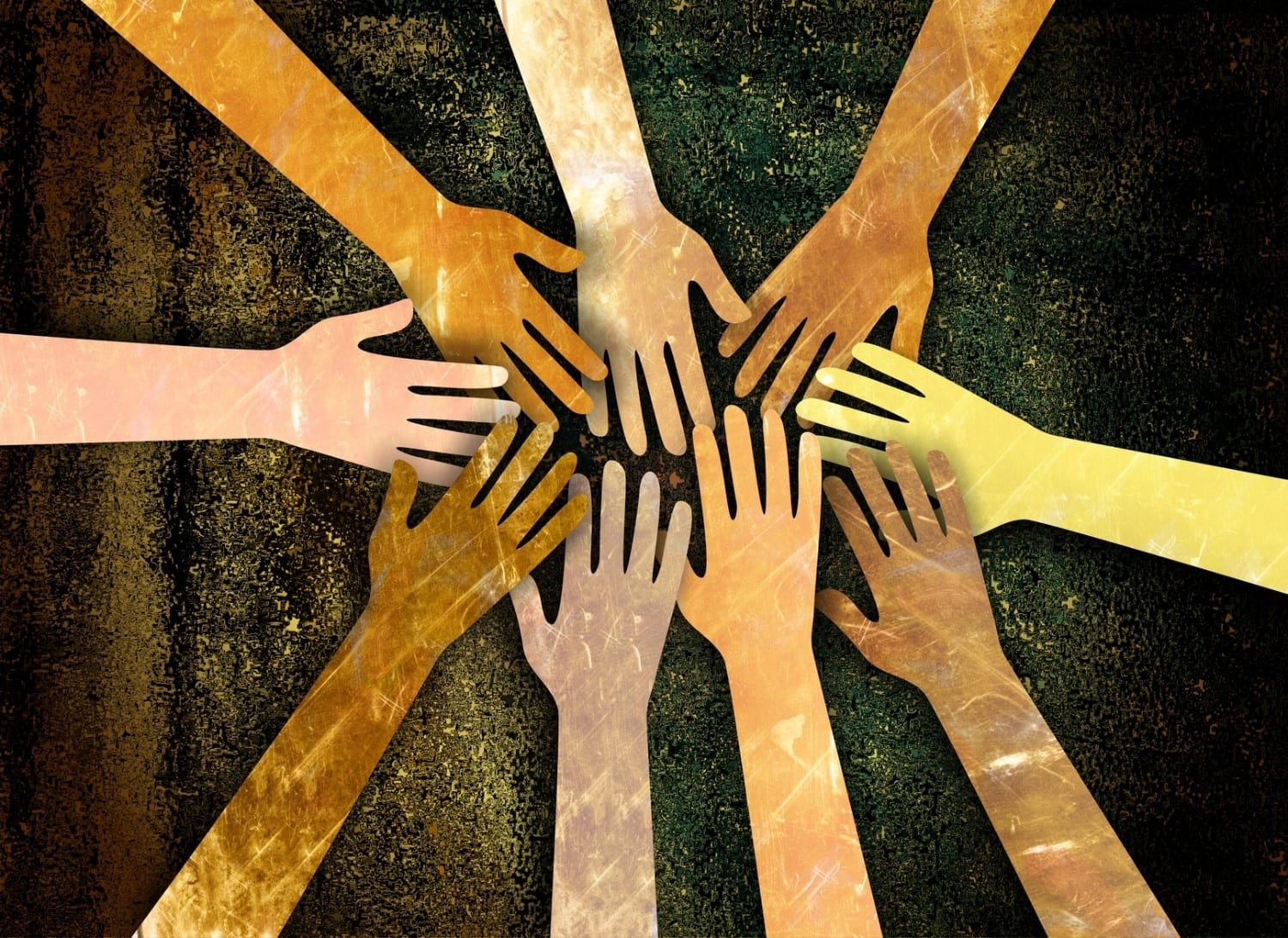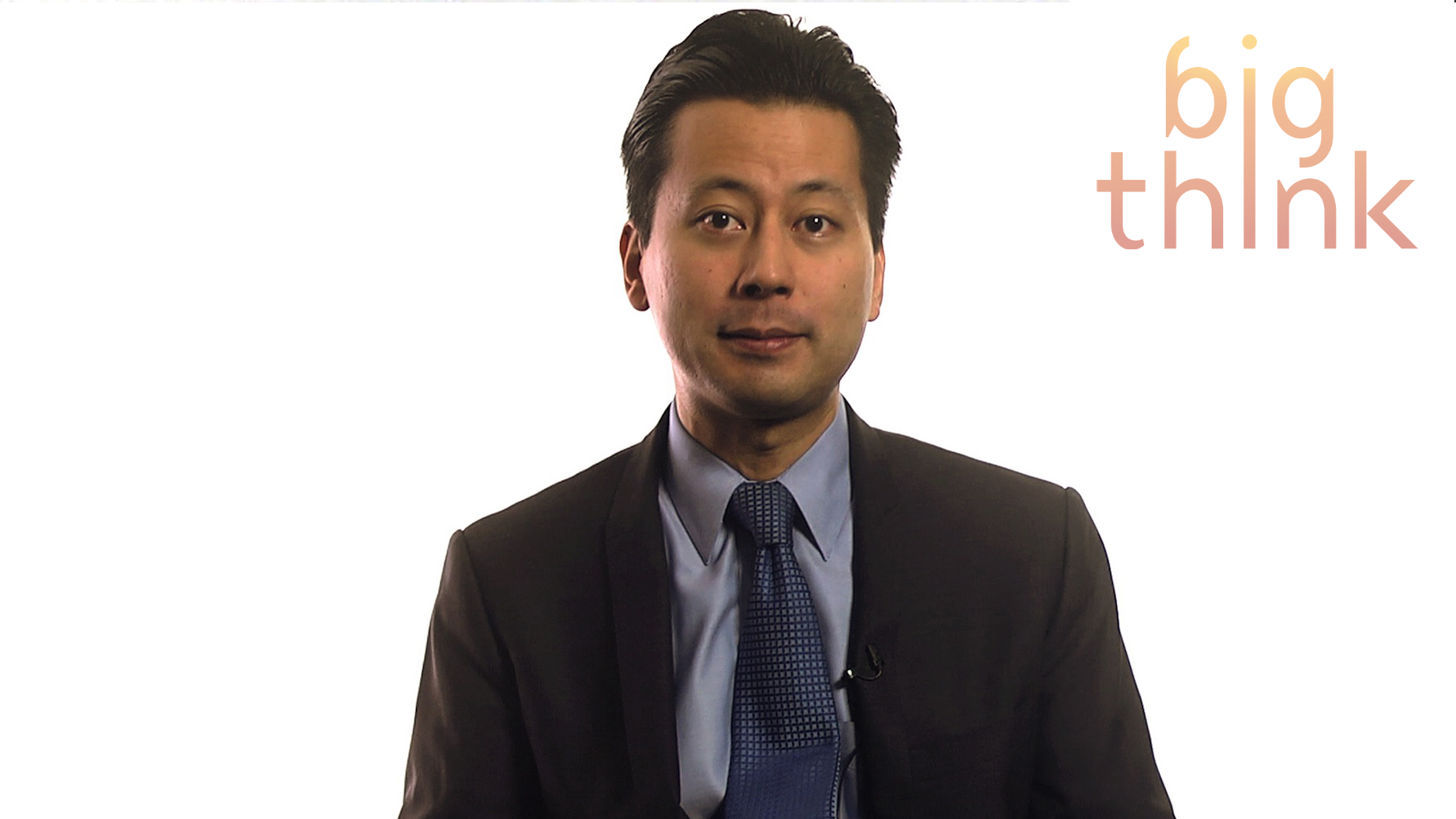Kenji Yoshino is the Chief Justice Earl Warren Professor of Constitutional Law at the NYU School of Law. Prior to moving to NYU, he was the inaugural Guido Calabresi Professor[…]
Author and academic Kenji Yoshino describes the difference between passing and covering, and how companies will sometimes employ a facile form of diversity inclusion that necessitates the former.
▸
7 min
—
with
Sign up for the Smarter Faster newsletter
A weekly newsletter featuring the biggest ideas from the smartest people
Author and academic Kenji Yoshino describes the difference between passing and covering, and how companies will sometimes employ a myopic form of diversity inclusion that necessitates the abandonment of personal identity.
Yoshino is the co-author of a new paper titled “Uncovering Talent: A New Model of Inclusion.”
Directed / Produced by Jonathan Fowler, Elizabeth Rodd, and Dillon Fitton
▸
5 min
—
with






Kenji Yoshino: Diversity inclusion is something that has been around in companies for decades now and generally people think of it as diversity and inclusion. But I would actually challenge that given that I think that historically we’ve seen diversity or inclusion rather than diversity and inclusion. And what I mean by that is that companies really want inclusion but they often predicate that inclusion on the surrender of various forms of diversity that people bring to the table. So the idea is that if you modulate your outsider identity to adopt mainstream behaviors then you’ll be included. And so it puts people to this tragic choice between their identity and inclusion. And that’s where I think that companies have missed the mark or need to update their practices.
So I look at the notion of authenticity through Erving Goffman’s term covering. So Erving Goffman is a sociologist who wrote back in the 1960s, and his notion of covering was the way in which we all modulate our identities in order to be accepted by the mainstream. So when I first came across this term my immediate response was how does covering differ from passing. And one of the great things about Goffman is that he’s such a good writer that when you’re reading him you almost feel like you’re talking to him. So the next paragraph was, you know, the astute reader may be asking himself how covering differs from passing. And he gives the example of President Franklin Delano Roosevelt. And Roosevelt used to always make sure that he was seated behind a table before his cabinet entered. So he wasn’t passing because everybody knew that he had a motor function disability and was confined to a wheelchair.
But he was covering, making sure his more conventional presidential qualities – I am white, I am a man, were in the foreground. And his last conventional presidential quality, I’m a person with a disability was in the background of the interaction. And whether it’s on the basis of race or gender or sexual orientation or religion or disability, all of us engage in these practices where we downplay the things that push us outside of the mainstream. And that, as our study again shows, comes at a significant cost to people’s sense of self. So, you know, I’m a rubber hits the road kind of guy so even if we find a high incidence of this practice of covering which we found that 61 percent of individuals reported covering, I kind of thought well, I don’t care about this unless people report that it’s harmful to them. If people say I do it but it’s not a big deal then I don’t care. But 60 to 73 percent of individuals depending on the particular axis of covering that we looked at said that this was somewhat to extremely detrimental to their sense of self. So that’s something that we really need to be attentive to if we want people to really flourish in whatever organization they inhabit.
The prevalence of covering is something that we often get asked about and the distribution of which groups cover more and which groups cover less. And I have both an intuitive and an counterintuitive answer to that. So the intuitive answer is, you know, groups that are seen as struggling to make it into the mainstream have a much higher reported incidence of covering. So 83 percent of LGB respondents in our survey, lesbian, gay and bisexual, respondents in our survey reported covering; 79 percent of blacks both African Americans and non-nationals; 66 percent of women. So that array I think will strike many listeners as intuitive. But on the other hand we also found that 45 percent of straight white men reported covering on at least one of the dimensions that we articulate in our paper. And that was obviously a really interesting statistic to us and so we dug in more deeply to think about well what are the ways in which straight white men who are traditionally seen as outside of the inclusion paradigm, what are the ways in which they cover. And we discovered everything from I have to cover my religion to I have to cover my political affiliation.
I have to cover my veteran status or my working class background or I have to cover the fact that I have a mental or a physical illness. So we really ran the gamut. And the reason that that statistic was so important to us is that straight white men are often either lionized or demonized in these conversations. They’re either lofted up as people who are supposed to come riding in to fix everything or at worst they’re seen as people who are, you know, supposed to clean up their own mess, the people who caused the problem, they’re demonized. The notion is that straight white men cover and that this is a really, really important finding because it puts them inside of the inclusion paradigm. So when I presented these results to CEOs, to executive committees, to chief diversity officers this is a statistic that everybody gloms onto because the straight white men in the room, as one of them put it to me, this is finally a paradigm of inclusion in which I can see myself.
So I’m not outside looking in. I’m actually in this, right. Another way to put that would be to say that oftentimes when I gave early iterations of this research on covering, one response that I often got was I understand why people should not have to be discriminated against based on things that they can’t change about themselves. Like say their skin color or their chromosomes or if it’s immutable their sexual orientation. But why shouldn’t you have to cover because I have to cover all the time. I call this the angry straight white guy question because angry straight white men used to always ask it of me. And one of them really sort of hit me in the face, not literally but sort of cognitively when he said look, I just survived cancer – like I’m in remission from cancer. So no matter how much you struggled with any of these identities that you talk about, no matter how much other people struggle with regard to covering their disability or their sexual orientation or their gender, like I can’t talk about my cancer nor could I talk about it when I was going through it lest I be perceived as overly weak. So I didn’t pass. I did tell people but I didn’t emphasize it because I didn’t want people to think well he’s not going to be around or to write me off.
So the minute that you say I acknowledge that and I acknowledge that your claim to authenticity, your claim to human flourishing, you know, the burden of secrecy is as great for you as it is for me, right. That’s a moment when you actually can create a bridge and that’s a moment at which all of that resentment which can often be hidden among straight white men because they get, again, pilloried if they talk about it, right, suddenly turns into solidarity. The moment that you can say yes, you do this too and wouldn’t it be a better workplace if you didn’t have to do this either and if you also have a secret self and wouldn’t it be better if you didn’t have to hide that secret self, that’s when you get buy in and that’s when the organization moves forward.